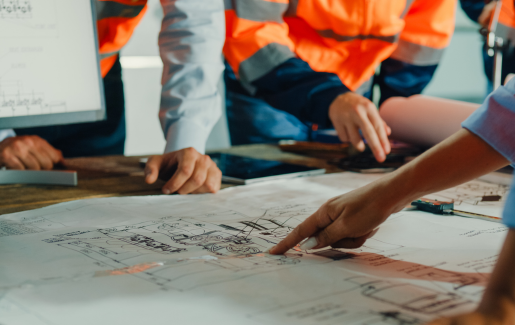 While the construction industry has seen adoption of emerging technologies, many remain skeptical about the benefits of adopting these new solutions. But according to Steven Capper, CIO, Royal BAM Group, who presented an insightful keynote on the topic during EMEA 2019, emerging technologies are impacting the construction industry in a big way—transforming everything from processes to capabilities with drones, artificial intelligence, internet of things and more. Read on for examples of how Royal BAM Group is using these emerging technologies.
While the construction industry has seen adoption of emerging technologies, many remain skeptical about the benefits of adopting these new solutions. But according to Steven Capper, CIO, Royal BAM Group, who presented an insightful keynote on the topic during EMEA 2019, emerging technologies are impacting the construction industry in a big way—transforming everything from processes to capabilities with drones, artificial intelligence, internet of things and more. Read on for examples of how Royal BAM Group is using these emerging technologies.
Drones Integral to Construction Industry
Capper explained how drones are becoming one of the most integral pieces of technology in the construction industry. There are multiple uses, including mapping construction sites for safety hazards and attaching thermal cameras that detect power line hot spots. In a recent project, Royal BAM Group used drones to create a 3D map of an entire construction site, which was able to show exact dimensions of how a finished build would look.
Logistics and BIM Visualize Buildings
Using logistics and business information modeling (BIM), Capper explained how Royal BAM Group can digitally construct a building, allowing them to "build" before breaking ground, putting every detail of a project together and visualizing each step of the process. This enables them to track the build, including any potential issues, and ultimately prevent problems that may arise during the actual construction—such as need for different building materials or sizes.
Artificial Intelligence in Road Construction
Royal BAM Group is putting sensors into the roads it builds so it can start taking full advantage of AI. For example, when it starts getting colder, the company will be able to predict the optimum temperatures and timing for salting roads. This ensures that the correct levels of salt are spread at times that minimize the impact on traffic.
VR/AR Changes the Customer Experience
Virtual reality and augmented reality are helping Royal BAM Group deliver training and onsite instruction to construction workers. This is a huge innovation in the way training is delivered, making it safer for people to learn while doing. Additionally, it is being used to help customers understand and visualize projects, showing them what materials will be used and the final outcome of a project in detail. Additionally, upcoming 5D and 6D capabilities will take that customer experience one step further, enabling things such as virtual acoustic testing.
Robotics and 3D Printing Save Money
3D printing has enabled Royal BAM Group to deliver more material, faster, as well as create more affordable building options. Despite using an expensive bit of kit, the material itself is created much faster and without the need for additional partners so it can be delivered at a more cost effective price.
What's Next in Construction Technology
The construction industry is already seeing results with new technology, a sure sign that there's more innovation to come. Because of the sheer magnitude of projects, the amount of people working on them and the complexity of each task, the construction industry is ripe for the continued adoption of emerging technologies that can streamline processes, bolster abilities and create bigger and better projects than ever before. This is just one sector, and Capper closed his keynote by encouraging those in the audience to work with their companies—in any industry—to welcome the adoption of new technologies.Join the Emerging Technology Community
Interested in drones, AI, IoT, 5G and more? Connect with like-minded peers and industry leaders in CompTIA's Emerging Technology Community. Join for free.

 Add CompTIA to your favorite RSS reader
Add CompTIA to your favorite RSS reader

.png?sfvrsn=38fbcb21_2)